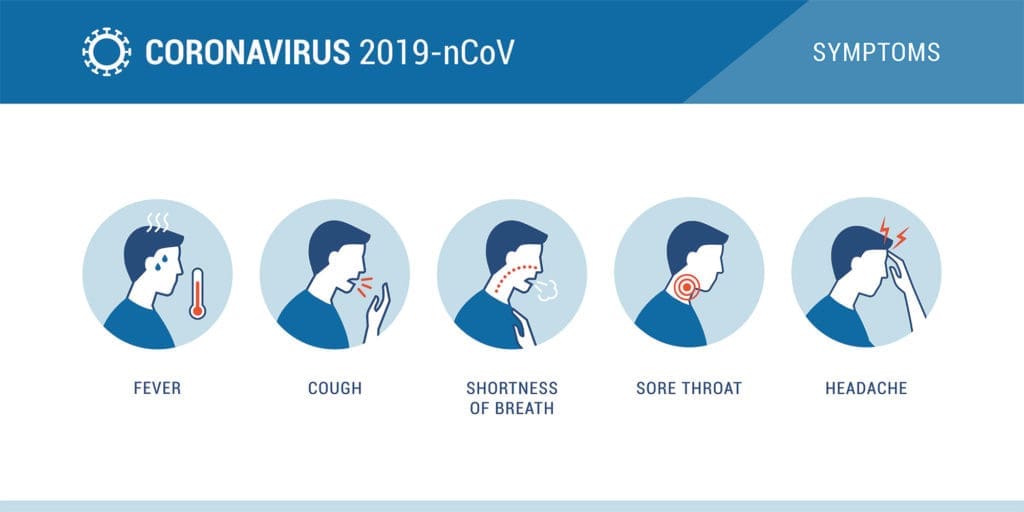With COVID-19 showing no signs of going away before influenza outbreaks begin in the fall, an understanding of coronavirus vs. flu symptoms can reduce confusion and anxiety.
Researchers and healthcare providers are bracing themselves for a “double whammy” that promises a challenging winter. So it makes sense to know which symptoms may be COVID-related and when to call the doctor.
Similarities
There are similarities between the two influenza viruses (A and B) and SARS-CoV-2 (COVID-19). Both viruses are respiratory illnesses, meaning both are spread by droplets we release every time we cough, sneeze, or speak.
(A group of scientists has suggested that COVID-19 may also be airborne, meaning that it can spread through the air with no close contact needed. As of July 9, the WHO says there is no evidence of this, and at least one clinical study agrees.)
COVID and the flu do share some symptoms and potential complications, but there are more differences than similarities between the two viruses.
Symptoms
Shared Symptoms
COVID-19, the disease caused by SARS-CoV-2, shares many symptoms with the flu. According to the Centers for Disease Control and Prevention (CDC), these symptoms can include:
- Fever or chills.
- Cough.
- Shortness of breath or difficulty breathing.
- Fatigue.
- Sore throat.
- Stuffy or runny nose.
- Muscle pain/body aches.
- Headache.
- Vomiting and diarrhea.
COVID-Specific Symptoms
 In addition to those symptoms mentioned above, COVID can present with dizziness or loss of smell or taste. Nausea, vomiting, and diarrhea are common in adults as well as children.
In addition to those symptoms mentioned above, COVID can present with dizziness or loss of smell or taste. Nausea, vomiting, and diarrhea are common in adults as well as children.
The earliest symptoms tend to be fever, fatigue, sore throat, cough, and shortness of breath.
Because SARS-CoV-2 is a new virus, researchers still see new and less-common symptoms of COVID-19. They include rash and other skin lesions, confusion in older people, and eye problems.
Also, COVID symptoms vary widely from one person to another. Some people have very mild symptoms or no symptoms at all.
Time from Exposure to First Symptoms
COVID-19 has a longer incubation period than the flu. Symptoms begin anywhere between two days and two weeks after exposure, with a median of five days. Flu symptoms can appear in one to four days, and the average is two days.
Transmission Rates
Both viruses are contagious, but COVID appears to spread from person to person more quickly and efficiently than the flu. It seems that people can spread COVID-19 for two days before symptoms appear and up to 10 days after testing positive.
People with the flu are contagious for about a day before they notice symptoms. For children, the contagious period is three to seven days.
Vaccination and Treatment
Because SARS-CoV-2 is a new virus, there’s no vaccine for COVID. Researchers are hustling to develop one, but creating a vaccine can take months to years.
Flu vaccines are available. The specific strains of influenza vary from year to year, so people need annual flu vaccines.
Antiviral medications are available to treat the flu. Medication is most effective within 2 days after symptoms begin. People at high risk of serious illness should get an antiviral even after those 2 days.
Antivirals are not the same as antibacterial medications, which only work with bacterial illnesses, not viruses.
 Risk of Severe Illness
Risk of Severe Illness
Adults at increased risk of severe illness from COVID include the elderly; people with lung or heart disease, diabetes, or other underlying conditions; Black or Hispanic people; and those with compromised immune systems or chronic pain.
Children don’t catch COVID as often as adults, and they usually have mild symptoms, if any. Kids are at higher risk of serious illness with the flu than with COVID-19.
Complications
Similarities
Complications that apply to both COVID-19 and flu can include:
- Respiratory failure.
- Pneumonia.
- Acute respiratory distress syndrome (ARDS).
- Heart attack.
- Stroke.
- Sepsis.
- Multi-organ failure (respiratory failure, kidney failure, or shock).
- Worsening of chronic medical conditions.
- Inflammation of the heart, brain, or muscles.
- Secondary bacterial infections (infections that occur in people who are already infected with flu or COVID).
 Differences
Differences
Other complications that are COVID-specific include blood clots in the lungs, heart, brain, or legs and multisystem inflammatory syndrome in children (MIS-C).
Some complications apply specifically to the flu and can vary between children and adults. Visit the CDC site for the complete list.
Mortality Rates
In the early days, you may have heard that COVID-19 was no more dangerous than the flu. Researchers now know that is not the case. However, for various reasons, it’s hard to make comparisons between the two.
We do know that the average mortality rate of the flu is generally accepted to be 0.1% among those with symptoms. COVID-19’s appears to be much higher. In March, the World Health Organization (WHO) reported the global mortality rate of COVID-19 to be 3.4%. This is a conservative estimate compared to other sources.
When to Seek Medical Attention
If you think you may be having COVID symptoms, don’t go to the clinic. Instead, call your doctor. They will advise you on next steps.
It can take days to get test results back, so quarantine at home until you get them.
Do not attempt to self-diagnose! If you have concerning symptoms, get tested or call your doctor.
If you have severe symptoms such as difficulty breathing, pain or pressure in the chest, or other potentially life-threatening symptoms, call 911.
 Protect Yourself and Others
Protect Yourself and Others
There is a lot of misleading and even dangerous information circulating in the media about COVID-19. Visit the WHO site for medically reviewed information that busts some of the myths surrounding the coronavirus.
According to WHO and CDC guidelines, the best protection continues to be hand-washing, mask-wearing, and social distancing.
What questions do you have about COVID or flu symptoms?
Share your ideas in the comments or email us at info@painresource.com.
Are you on Facebook?
Join our online community by clicking here.


 Risk of Severe Illness
Risk of Severe Illness Differences
Differences Protect Yourself and Others
Protect Yourself and Others